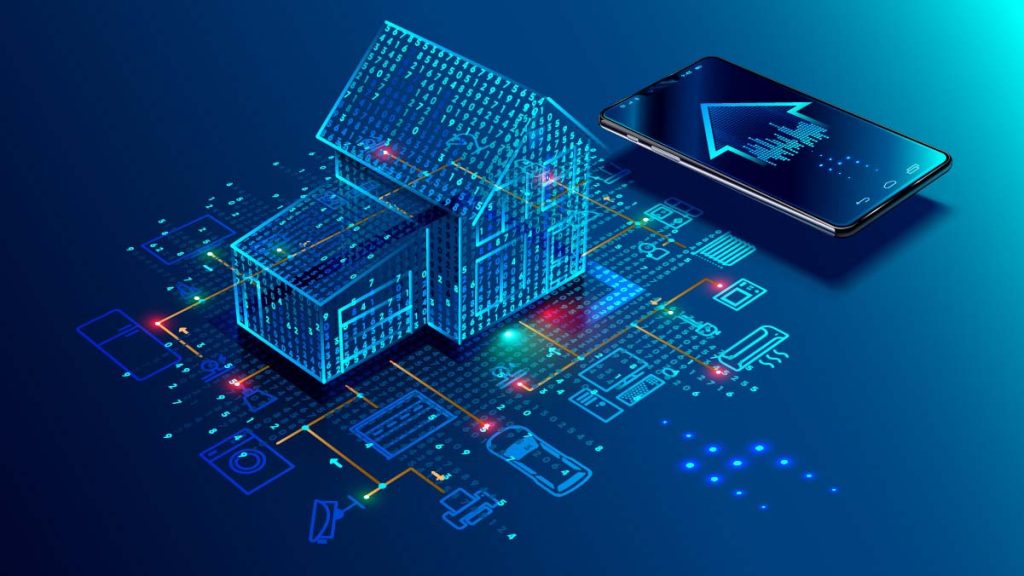
The further technology goes, the deeper it sinks into your home. The IoT (Internet of Things) smart home applications automate everything in your house, from lighting to locks. The first proper home automation device, ECHO IV, was invented in 1966 by Westinghouse engineer Jim Sutherland and It was all uphill from there.
IoT Smart Home Applications Design
The best Smart Home applications have multiple parts to them.
- Sensors: They collect internal and external home data and measure home conditions. They then report back to the devices.
- Local Server Processors: they process the collected data and oversee the performing of local and integrated actions.
- Software components wrapped as Application Programming Interface (APIs): these APIs process sensor’s data and manage required steps.
- Actuators: They execute commands in the control devices. They translate the needed activity to the command syntax that the device can run. If any rules set by the command syntax become true, the system may send a command to the proper processor.
- Database: The processed data collected from the sensors is recorded in the database to be used later for data analysis, presentation, and visualization.
Why Install IoT Smart Home Applications
The application of IoT in Smart Homes is increasing in popularity. Individuals opted for its installment for a plethora of reasons.
Reduced Installation Costs
These applications are internet-based. Thus, there is no need for cables when installing. Your home remains clean: no drilling or damaging its integrity.
Internet Connectivity
The digital nomad population is increasing. Some of them, however, still own property and residences in their country of origin. Since Smart Home IoT applications can be configured and adjusted from anywhere in the world since they are internet-reliant.
Reduced Expenses
Having some aspects of your home run by such applications will reduce your expenses as they can monitor the utilities (i.e., energy and water) and reduce unnecessary usage.
Facilitating Business Operations
After the pandemic hit the world, working from home is now a popular option among workforce members. Whether working from home or operating your own business out of your residence, you can shorten your To-Do list by delegating specific mundane tasks to your IoT Smart Home applications and network.
What Can These Smart Home Applications Control
The best smart home applications are those controlling the central elements of your residence.
Lighting Control
Smart lighting applications are Smart Home applications that rely on IoT-enabled sensors, bulbs, or adapters to control the lighting settings at your location of choice. They help you manage your home or office lighting through a mobile application or smart home management platform (i.e., Alexa Smart Home). You can change the color or dimness of a room through a smart assistant or mobile application that controls Wi-Fi-enabled bulbs.
HVAC System
The heating, ventilation, and air conditioning (HVAC) system is a system controllable through an IoT Smart Home application. The features of this system go beyond your ability to control the environment remotely: it’s “smart” enough to adjust the parameters on its own, according to what the sensors have picked up. The algorithm consists of a set of commands a smart device relies on to perform the required adjustments to maintain the indoor environment. However, an important distinction is to be made here: an IoT HVAC Smart Home Application is ductless. It relies on infrared, just like a remote control.
Lawn/Gardening Management
The introduction of Smart Home applications to gardening has enabled the automation of several tasks (i.e., watering, fertilizing, etc.) and the ability to maintain a timely irrigation system, meet fertilization needs, and warn against pest control issues. This addition to your home garden allows you to monitor, in real-time, your crops through sensors tracking the status of the crops and soil. Heavy tasks such as watering are now simplified and economized. As it is better to prevent than cure, IoT in smart home gardens allows for identifying potential pest control and disease problem. It then notifies the owner so they can take corrective action. This system decreases labor costs while keeping the owner up to date.
Home Safety
A secure home is essential to reducing stress in everyday life. Smart applications for home security are the new way to go. Since you are connected to the system in real-time, it notifies you immediately if the sensors detect anything out of the ordinary. Smart applications for home security include smoke detectors (a comprehensive smoke detection system can inform the elevator sensor to block its use in case of a fire), sensors tracking water leaks, and incident management (i.e., a stove left on).
Wrap-up
IoT Smart Home applications have become increasingly essential in the average person’s daily life. The individuals can monitor their homes and adjust their conditions through compatible applications. Or you can hand those tasks to the system as it can manipulate environmental parameters to meet the programmed standards. While the Smart Home applications’ takeover of your home may seem excessive to some people, it appears reasonable to others. But wherever you land on that spectrum, you cannot deny the accessibility and ease of mind it provides.
Inside Telecom provides you with an extensive list of content covering all aspects of the tech industry. Keep an eye on our Intelligent Tech sections to stay informed and up-to-date with our daily articles.